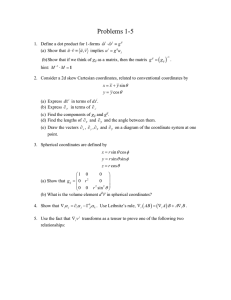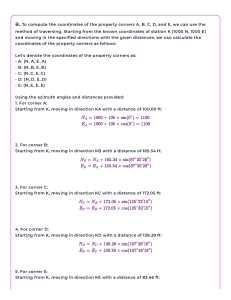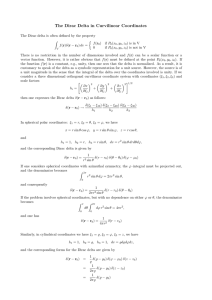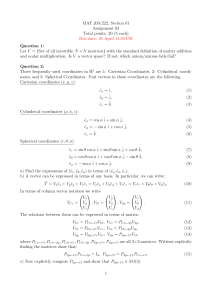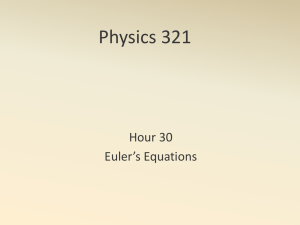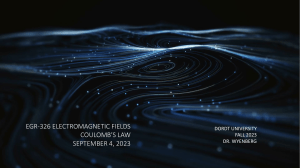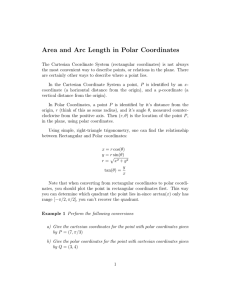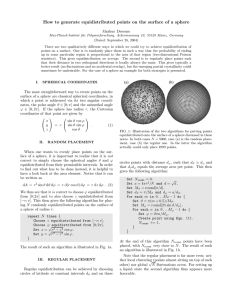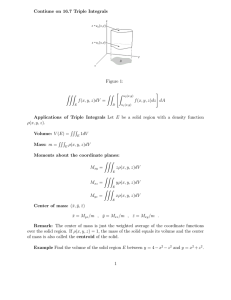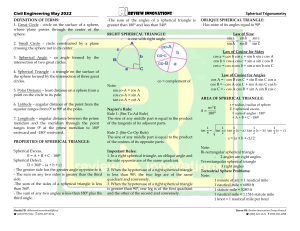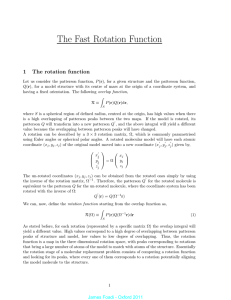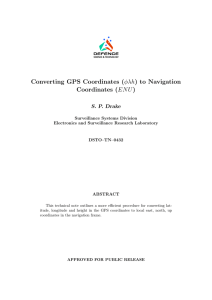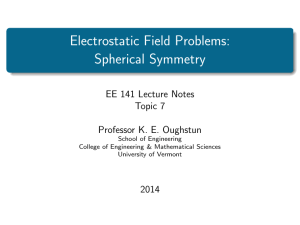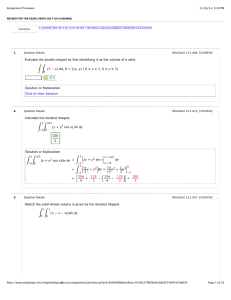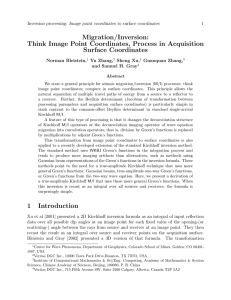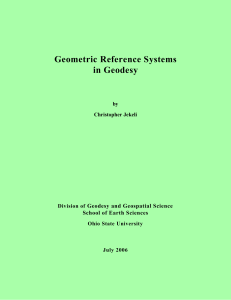1 --- – =
advertisement
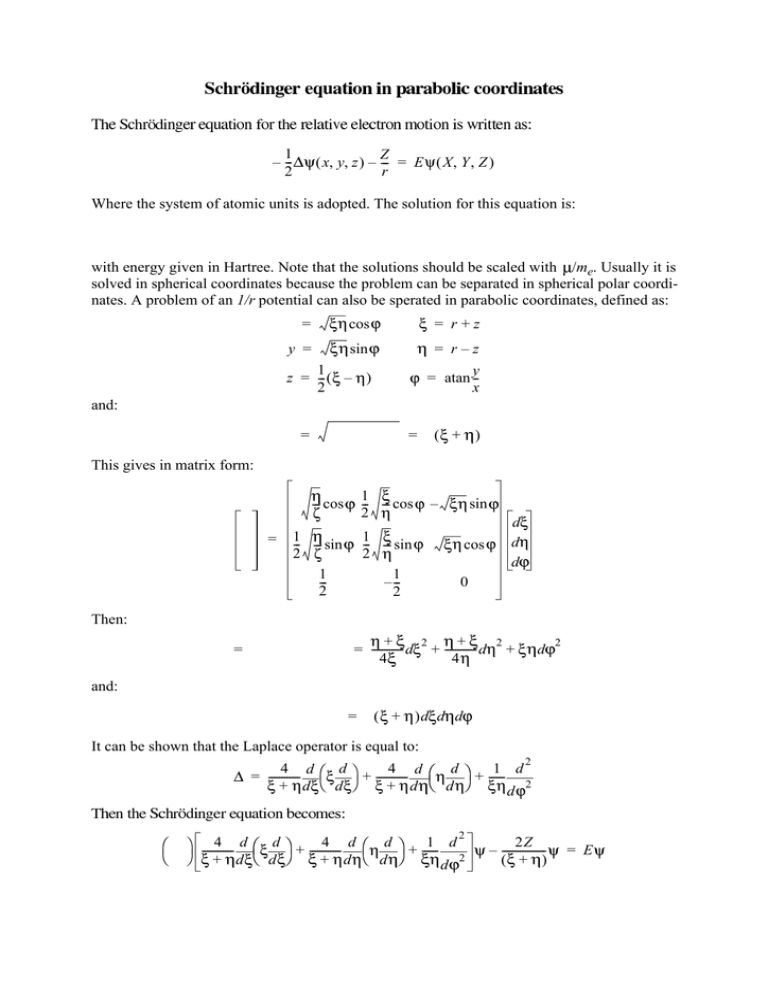
1 – --2 Z ( x, y, z ) – --- = E ( X , Y , Z ) r Where the system of atomic units is adopted. The solution for this equation is: 2 Z E n = – --------2 2n with energy given in Hartree. Note that the solutions should be scaled with /me. Usually it is solved in spherical coordinates because the problem can be separated in spherical polar coordinates. A problem of an 1/r potential can also be sperated in parabolic coordinates, defined as: x = cos = r+z y = sin = r–z 1 z = --- ( – ) 2 y = atan -x and: r = 1 2 2 2 x + y + z = --- ( + ) 2 This gives in matrix form: dx dy = dz 1 --- --- cos 2 1 --- --- cos 2 1 --- --- sin 2 1 --2 1 --- --- sin 2 1 – --2 – sin d d d cos 0 Then: + 2 2 2 2 ds = dx + dy + dz = ------------ d 4 2 + + ------------ d 4 2 + d 2 and: 1 dx dy dz = --- ( + ) d d d 4 It can be shown that the Laplace operator is equal to: 4 d = -----------+ d 1 – --2 4 d -----------+ d d d d d 4 d + -----------+ d 4 d + -----------+ d d d 2 d d 1 d + ------ 2 d 2 1 d + ------ 2 d 2Z – ----------------( + ) = E Define now a solution of this equation as: ( , , ) = with m 0. Insertion and deviding by 4 1 – --2 d d 4 1 d ------------ -----+ 1 d im 2e 1 1( ) 2( im yields: d d 4 1 d + ------------ -----+ 2 d 1 )e 2 1 2 2Z + ------m – ----------------- = E ( + ) Multiply by 1--4- ( + ) : d d 1 d -----1 d 1 d d 1 d + -----2 d ( + ) 2 1 + -----------------m + Z = – E --- ( + ) 4 2 2 and separate the m2 term as well as the Coulomb term in two parts with Z 1 + Z 2 = Z : d 2 1 d d 1 1 d 1 2 1 2 1 1 -----+ -----+ Z 1 + Z 2 – ------ m – ------m = – --- E + --- E d d 4 4 2 2 1 d 2 d These are in fact two identical differential equations, one for d d d d 1 The behaviour of the wave function for large e 1 – --2 + Z1 1 1 1 2 – ------ m 4 1 1( 1 = – --- E 2 ) and one for 1 in the limiting cases is: 1 --- m 2 for small A solution is taken of the form: 1 with x = and = = e 1 – --2 1 --- m 2 f 1( ) – 2E this leads to an equation: 2 x d f1 dx 2 + (m + 1 – x) df1 Z m+1 + -----1- – ------------- f 1 = 0 dx 2 Again a Laguerre-type equation with solutions: m f 1 = L n1 + m ( x ) with a quantisation condition, for each equation: Z 1 n 1 = -----1- – --- ( m + 1 ) 2 Z 1 n 2 = -----2- – --- ( m + 1 ) 2 2( ): Also n1 must be a non-negative integer if is to be real and remains finite. So: Z Z Z --- = -----1- + -----2- = n 1 + n 2 + ( m + 1 ) = n This gives the energy quantization: 1 E = – --2 2 1Z = – --- -----22n in hartree units. The normalized eiegenfunctions are: 1⁄2 n1 n2 m 1⁄2 im ( n 1! ) ( n 2! ) e = ------------- ------------------------------------------------------------n ( n 1 + m )! 3 ⁄ 2 ( n 2 + m )! 3 ⁄ 2 2 m+3⁄2 e 1 – --- ( + ) 2 ( 1 --- m 2 m ) L n1 + m ( m )L n2 + m ( These eigenfunctions are symmetrical with respect to the plane z=0. For n 1 > n 2 the density is on the positive side of z, for n 1 < n 2 at the negative side. )




